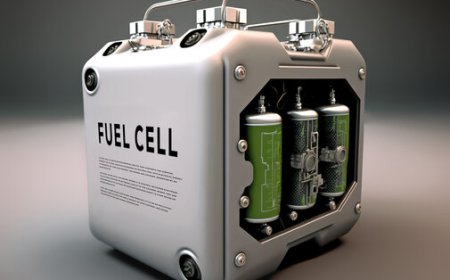The Disposable Revolution: Unpacking the World of Convenient Bowls
Explore the evolving world of disposable bowls, from their everyday convenience to their environmental impact. This in-depth look covers materials, uses, sustainability, and the future of these essential single-use items, offering insights for consumers and businesses alike.

In a world increasingly driven by convenience and fast-paced living, the humble disposable bowl has emerged as an indispensable item, quietly revolutionizing how we eat, serve, and entertain. From bustling food trucks to elegant outdoor picnics, and from hurried office lunches to large-scale catering events, disposable bowls offer a practical solution for a myriad of culinary needs. This extensive exploration delves into the multifaceted world of disposable bowls, examining their origins, the diverse materials they are crafted from, their pervasive applications, the burgeoning environmental concerns they present, and the innovative strides being made towards a more sustainable future.
The concept of single-use dinnerware is not entirely new. Historically, leaves, gourds, and even hollowed-out bread served as rudimentary disposable containers. However, the advent of mass production and synthetic materials in the 20th century truly propelled disposable dinnerware, including bowls, into the mainstream. The post-World War II economic boom, coupled with a shift towards more casual lifestyles, fueled the demand for products that minimized cleanup and maximized efficiency. Early disposable bowls were often made from wax-coated paper, offering a lightweight and affordable alternative to traditional dishware. As technology advanced, so did the variety and sophistication of these products, leading to the diverse range we see today.
One of the most significant aspects of disposable bowls is the array of materials used in their manufacturing. Each material offers a unique set of properties, influencing the bowl's durability, heat resistance, biodegradability, and cost. Understanding these distinctions is crucial for consumers and businesses alike to make informed choices that align with their specific needs and environmental values.
Plastic Bowls: For decades, plastic has been the reigning king of disposable dinnerware. Polystyrene (PS), polypropylene (PP), and polyethylene terephthalate (PET) are the most common types of plastic used for disposable bowls.
-
Polystyrene (PS): Often found in foam form, PS bowls are lightweight, inexpensive, and provide excellent insulation for both hot and cold foods. They are commonly used for soups, cereals, and ice cream. However, their brittle nature can lead to cracking, and their environmental impact is a significant concern due to their non-biodegradable nature and difficulty in recycling.
-
Polypropylene (PP): PP bowls are more durable and flexible than PS, making them suitable for a wider range of applications, including microwave heating. They are often used for hot meals, pasta, and salads. While more easily recyclable than PS, their recyclability still depends on local infrastructure.
-
Polyethylene Terephthalate (PET): PET bowls are clear, strong, and offer good barrier properties, making them ideal for showcasing salads, fruits, and cold desserts. They are widely recycled, particularly for beverage bottles, but their use in food packaging also contributes to the overall plastic waste stream.
Paper and Paperboard Bowls: These bowls have long been a staple, evolving significantly over time.
-
Wax-Coated Paper Bowls: The traditional choice, these offer decent liquid resistance for a short period. They are often used for cold foods and some hot applications where prolonged liquid contact is not expected. Their wax coating, however, can make them difficult to recycle.
-
Poly-Coated Paper Bowls: To enhance liquid and grease resistance, many paper bowls are coated with a thin layer of polyethylene (PE). This makes them more robust for hot liquids and greasy foods, such as soups, stews, and curries. The PE coating, however, complicates the recycling process, often requiring specialized facilities to separate the paper fibers from the plastic.
-
Uncoated Paperboard Bowls: With growing environmental awareness, there's an increasing demand for uncoated paperboard bowls. These are typically made from virgin or recycled paper fibers and are designed to be compostable or easily recyclable, provided they are not excessively soiled with food residue. They are often used for dry foods or foods with minimal moisture content.
Plant-Based and Compostable Bowls: This category represents the cutting edge of disposable bowl technology, driven by the urgent need for sustainable alternatives.
-
Bagasse Bowls: Made from the fibrous residue left after sugarcane stalks are crushed to extract juice, bagasse bowls are a highly popular and rapidly growing option. They are sturdy, naturally compostable, and can withstand both hot and cold temperatures, making them suitable for a wide range of dishes. They biodegrade rapidly in commercial composting facilities, returning nutrients to the soil.
-
PLA (Polylactic Acid) Bowls: PLA is a bioplastic derived from renewable resources like corn starch, cassava, or sugarcane. PLA bowls are transparent, similar to conventional plastic, and are suitable for cold foods and beverages. While compostable, they require industrial composting facilities, as they do not break down effectively in home compost bins. Their heat resistance can also be a limiting factor for very hot foods.
-
Palm Leaf Bowls: Crafted from fallen Areca palm leaves, these bowls are truly natural, biodegradable, and compostable. Each bowl is unique in its texture and appearance, offering an aesthetically pleasing and eco-friendly option for events and upscale catering. They are surprisingly robust and can handle both hot and cold foods.
-
Bamboo Fiber Bowls: Made from compressed bamboo fibers, these bowls are durable, lightweight, and often reusable for a limited number of washes. While not always fully compostable, they are a more sustainable alternative to traditional plastics and often break down more readily than conventional plastic in landfills.
The applications of disposable bowls are virtually limitless, permeating almost every facet of modern life. Their primary advantage lies in their unparalleled convenience, eliminating the need for washing and greatly simplifying cleanup, particularly in scenarios where access to dishwashing facilities is limited or impractical.
In the food service industry, disposable bowls are an absolute cornerstone. Fast-casual restaurants, food trucks, and takeaway establishments rely heavily on them for serving everything from ramen and pasta to salads and grain bowls. Their ability to handle various food temperatures and their portability make them ideal for customers on the go. Caterers frequently utilize disposable bowls for large events, ensuring efficient service and a streamlined cleanup process. Buffets, salad bars, and dessert stations are also common settings where these bowls facilitate self-service and hygiene.
Beyond commercial use, disposable bowls are an integral part of everyday household life. They are a go-to for impromptu meals, kids' snacks, and backyard BBQs, significantly reducing the chore of dishwashing. For busy individuals and families, they offer a quick and easy solution when time is of the essence. Camping trips, picnics, and outdoor gatherings are made considerably simpler with the use of disposable bowls, as they eliminate the need to transport and clean fragile dinnerware.
Healthcare facilities also employ disposable bowls for various purposes, including serving patient meals and containing medical waste, where sterility and ease of disposal are paramount. Similarly, in laboratories, they can be used for non-critical applications where cross-contamination needs to be minimized.
The convenience offered by disposable bowls comes with a significant environmental footprint, which has become a major global concern. The sheer volume of disposable items consumed daily contributes massively to landfill waste, ocean pollution, and greenhouse gas emissions.
Plastic disposable bowls, in particular, are a significant contributor to environmental degradation. Their non-biodegradable nature means they can persist in landfills for hundreds of years, leaching harmful chemicals into the soil and water. When they escape into natural environments, especially oceans, they pose a severe threat to wildlife through entanglement and ingestion. The production of virgin plastics also relies heavily on fossil fuels, contributing to carbon emissions. Even widely recyclable plastics like PET often face challenges in collection and processing infrastructure, leading to a substantial amount still ending up in landfills or incinerators.
Paper-based disposable bowls, while often perceived as more environmentally friendly, are not without their drawbacks. Many are coated with plastic (PE), which makes them difficult to recycle in standard paper recycling streams. If not properly disposed of, they can still contribute to litter and take time to decompose, especially in oxygen-deprived landfills.
The growing awareness of these environmental challenges has spurred a global movement towards sustainability, driving innovation in the disposable bowl industry. The focus is shifting from simply "disposable" to "biodegradable," "compostable," and "recyclable."
Brand Spotlight: Got Cups
In the competitive landscape of disposable dinnerware, brands like Got Cups are emerging as key players, demonstrating a commitment to providing a wide array of disposable solutions that cater to both conventional needs and growing sustainability demands. While their name might suggest a primary focus on beverage containers, many such companies offer a comprehensive range of disposable products, including an extensive selection of bowls crafted from various materials. Brands like Got Cups understand the diverse requirements of the market, offering choices that span from traditional plastic options for cost-effectiveness and durability, to innovative plant-based and compostable alternatives for environmentally conscious consumers and businesses. Their product lines are designed to meet the demands of different settings, from bustling cafes and restaurants to large-scale events and everyday household use, ensuring that customers have access to the right disposable bowl for every occasion, often with an increasing emphasis on eco-friendly solutions that align with modern values.
The future of disposable bowls is undoubtedly green. Research and development are continuously exploring new materials and manufacturing processes to minimize environmental impact while maintaining functionality and affordability.
-
Advanced Bioplastics: Beyond current PLA applications, scientists are developing new bioplastics with improved heat resistance, better barrier properties, and enhanced biodegradability in various environments. This includes PHA (polyhydroxyalkanoates), which are derived from bacterial fermentation and can biodegrade in marine environments.
-
Mushroom-Based Materials: Mycelium, the root structure of fungi, is being explored as a binder for agricultural waste to create incredibly lightweight, strong, and fully compostable packaging, including bowls.
-
Algae-Based Materials: Algae, a rapidly growing and renewable resource, is also being investigated for its potential to create sustainable plastics and packaging materials.
-
Innovations in Recycling: Efforts are being made to improve the infrastructure for recycling complex materials, such as PE-coated paper, through advanced separation technologies. Chemical recycling, which breaks down plastics into their basic monomers for reuse, also holds promise for handling difficult-to-recycle plastic bowls.
-
Closed-Loop Systems: The ultimate goal is to establish closed-loop systems where disposable bowls are collected, processed, and reformed into new products, minimizing waste and maximizing resource efficiency. This would require significant investment in collection, sorting, and processing infrastructure.
-
Reusable Options: While this article focuses on disposable bowls, it's worth noting the parallel trend of promoting reusable alternatives wherever feasible, as reducing consumption is the most impactful step towards sustainability. However, for certain applications, disposable options will always be necessary.
In conclusion, disposable bowls have undeniably reshaped our relationship with food, offering unparalleled convenience in a fast-paced world. From the simple paper bowl of yesteryear to the advanced compostable options of today, their evolution mirrors societal shifts and technological advancements. While the environmental challenges posed by traditional disposable bowls are significant, the industry is undergoing a transformative period, driven by a collective commitment to sustainability. As consumers, our choices play a crucial role in shaping this future. Opting for responsibly sourced, compostable, or recyclable disposable bowls, and advocating for improved waste management infrastructure, can significantly mitigate their environmental footprint. The journey towards truly sustainable disposable solutions is ongoing, but with continued innovation and conscious consumerism, the future of the disposable bowls promises a harmonious balance between convenience and ecological responsibility.





























